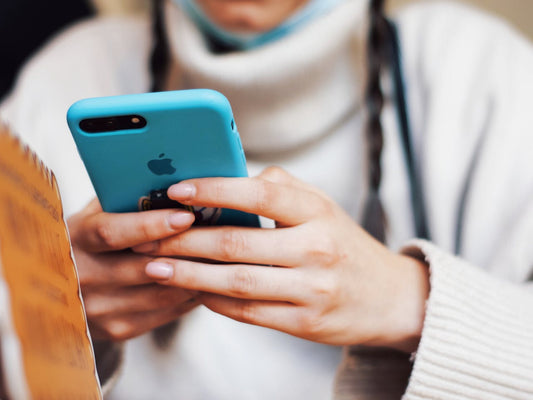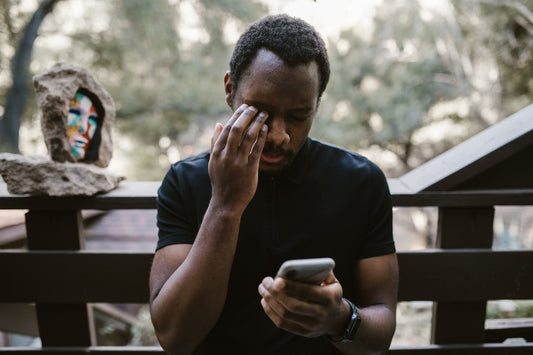Disclaimer: Content is created by humans, AI, or a mix of both. Reader discretion is advised.
Cheek pinching might seem like a playful or affectionate gesture, but it can carry different meanings depending on the context, the relationship, and cultural nuances. Understanding why a guy would pinch your cheeks can help decipher the intention behind this seemingly simple action. This article delves into the possible reasons, cultural significance, and psychological aspects of this gesture, while also offering tips on how to respond.
Understanding the Gesture: What Does Cheek Pinching Signify?
Cheek pinching is often associated with emotions like affection, playfulness, and admiration. However, its significance can vary widely depending on the situation and the individuals involved. Here’s a breakdown of the possible meanings:
1. A Display of Affection
One of the most common reasons a guy might pinch your cheeks is to express affection. Similar to ruffling someone’s hair or giving a gentle hug, cheek pinching can be a non-verbal way to show fondness or care, especially in casual or familial relationships.
2. Playful Teasing
For some, cheek pinching is a form of playful teasing. It might be their way of joking around or lightening the mood. In this case, the gesture is often accompanied by a smile, laughter, or a lighthearted comment.
3. A Compliment in Disguise
Sometimes, a guy pinches your cheeks as a way to express admiration or compliment you. For example, he might think your cheeks look particularly rosy or “cute,” and the pinch serves as a physical manifestation of that thought.
4. Nostalgia or Familiarity
Cheek pinching might also stem from nostalgia, especially if the guy is older or views you in a protective or familial way. It can be reminiscent of how adults often show affection to children, carrying over into adulthood in certain contexts.
Cultural Perspectives on Cheek Pinching
The interpretation of cheek pinching can also depend on cultural norms and traditions. Different societies view physical gestures like this in unique ways:
1. Western Cultures
In many Western cultures, cheek pinching is often associated with older adults expressing affection toward younger individuals, such as grandparents with their grandchildren. However, it can also be a lighthearted gesture among peers.
2. Asian Cultures
In certain Asian cultures, cheek pinching can be a way to express affection or admiration, especially toward someone considered youthful or adorable. It may also be used as a playful way to break the ice or foster closeness.
3. Romantic and Platonic Variations
In romantic contexts, cheek pinching might be a way to flirt or show intimacy. Conversely, in platonic relationships, it could simply indicate camaraderie or playfulness.
The Psychology Behind Cheek Pinching
Understanding the psychology behind this gesture can shed light on its deeper meanings:
1. Expression of Emotions
Pinching someone’s cheeks can be an instinctive way of expressing strong emotions, such as affection, excitement, or joy. Psychologically, physical gestures often accompany verbal expressions to amplify the emotional message.
2. Body Language and Proximity
Body language plays a significant role in communication, and cheek pinching involves close physical proximity. This can signal comfort, trust, or a desire to connect on a personal level.
3. Mirror Neurons and Empathy
Cheek pinching may activate mirror neurons in both the giver and receiver, creating a sense of shared emotion. This gesture often feels intimate because it taps into the brain’s natural empathy mechanisms.
When Is Cheek Pinching Appropriate?
Cheek pinching, while often harmless, might not always be welcomed or appreciated. Context is crucial in determining whether the gesture is appropriate:
1. Consent and Comfort
If the recipient feels uncomfortable with physical touch, even a seemingly innocent gesture like cheek pinching can be unwelcome. Always consider the other person’s comfort level and boundaries.
2. Relationship Dynamics
The appropriateness of cheek pinching also depends on the relationship dynamics. For instance, it might be seen as endearing in a close friendship or familial bond but awkward in a professional setting.
3. Cultural and Social Norms
Certain cultures and social circles might view cheek pinching as intrusive or overly familiar, while others may see it as completely normal.
How to Respond When a Guy Pinches Your Cheeks
If a guy pinches your cheeks, your response can vary depending on your comfort level and the context. Here are some options:
1. Respond Positively
If you’re comfortable and interpret the gesture as affectionate or playful, you can respond with a smile or a lighthearted comment.
2. Communicate Boundaries
If you’re not comfortable with cheek pinching, it’s essential to express your feelings clearly but kindly. For example, you could say, “I’m not a big fan of cheek pinching, but thanks for the gesture!”
3. Understand the Intention
Sometimes, understanding the intention behind the gesture can help you decide how to respond. If it’s meant as a compliment or playful gesture, acknowledging the intent might smooth over any initial discomfort.
Signs That Cheek Pinching Might Indicate Something More
In certain situations, cheek pinching might carry deeper meanings or intentions. Here’s what to watch for:
1. Romantic Interest
If the guy frequently pinches your cheeks while also exhibiting other signs of affection, such as sustained eye contact or compliments, it might indicate romantic interest.
2. Protective Feelings
Cheek pinching can also be a sign of protective feelings, especially if the guy sees you as someone he wants to look out for or care about.
3. A Habit or Quirk
For some, cheek pinching might simply be a habitual gesture or quirky way of interacting with others. It doesn’t necessarily carry deeper emotional weight.
The Fine Line Between Cute and Annoying
While cheek pinching can be endearing in certain contexts, it can also cross into annoying or intrusive territory if overdone or unwelcome. Here’s how to navigate this fine line:
1. Frequency Matters
A one-time cheek pinch might feel sweet, but repeated gestures can become tiresome or irritating, especially if they’re not reciprocated.
2. Understanding Personal Space
Physical gestures should always respect personal boundaries. If cheek pinching feels invasive, it’s important to address it directly.
3. Cultural and Social Awareness
Being aware of how cheek pinching is perceived in different settings can help avoid misunderstandings or discomfort.
Cheek Pinching in Popular Media and Literature
Cheek pinching has made appearances in movies, TV shows, and literature, often symbolizing affection, playfulness, or comedic relief. For example:
1. In Romantic Comedies
Romantic comedies sometimes use cheek pinching as a playful way to show budding attraction or chemistry between characters.
2. In Family Dramas
In family-centric stories, cheek pinching often symbolizes the affection between older and younger generations.
3. In Cultural References
Certain cultural references use cheek pinching to highlight differences in customs or traditions, adding depth to characters and storylines.
The Science of Touch and Emotional Connection
Cheek pinching is a form of tactile communication, which plays a vital role in human interactions. Here’s a closer look at the science behind it:
1. The Role of Oxytocin
Physical touch, including cheek pinching, can trigger the release of oxytocin, often referred to as the “bonding hormone.” This helps strengthen social bonds and emotional connections.
2. Positive Reinforcement
Cheek pinching can serve as positive reinforcement, making the recipient feel appreciated or cared for.
3. Non-Verbal Communication
Gestures like cheek pinching add depth to communication by conveying emotions that words alone might not fully express.
Alternatives to Cheek Pinching
If cheek pinching isn’t your style, there are plenty of other ways to express affection or playfulness. Consider these alternatives:
1. Verbal Compliments
Words can be just as powerful as gestures. A sincere compliment can brighten someone’s day without the need for physical touch.
2. Other Playful Gestures
Instead of pinching cheeks, you might try a fist bump, high-five, or light tap on the shoulder to convey a similar sentiment.
3. Thoughtful Actions
Small, thoughtful actions, like sharing a joke or lending a helping hand, can also communicate care and camaraderie.
Conclusion
Cheek pinching is a multifaceted gesture that can signify a range of emotions, from affection and playfulness to nostalgia and admiration. Its meaning often depends on the context, cultural background, and relationship dynamics. While some may find it endearing, others might view it as intrusive, making it essential to consider personal boundaries and social norms.
By understanding the possible reasons behind cheek pinching and how to respond, you can navigate this gesture with confidence and grace. Whether it’s a sign of affection, a playful tease, or a quirky habit, cheek pinching is a reminder of the diverse ways humans express emotions and connect with one another.


